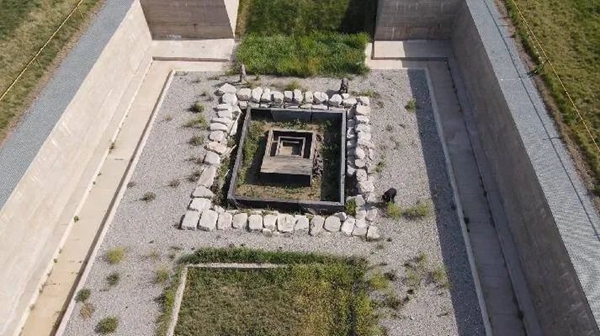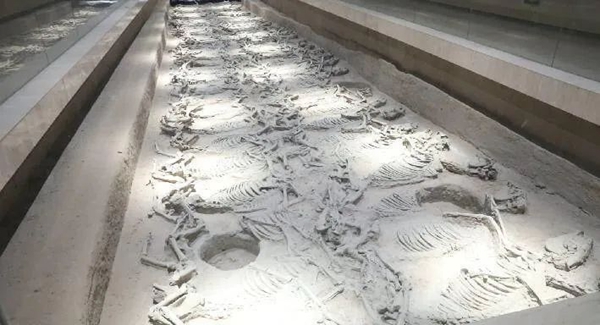

A photo of the archaeological park in Linzi district. [Photo/WeChat ID: zibofabu2014]
Workers have recently been restoring the main tomb chamber of a xunma pit, in which horses are buried alive with the dead, at an archaeological park in Linzi district – administered by Zibo in East China's Shandong province.
Over 600 xunma will be exhibited here in the second half of this year, local media reported.
The xunma pit was the burial pit of emperor Qijing's cemetery during the Spring and Autumn Period (770-476 BC) and the Warring States Period (475-221 BC). It is more than 2,500 years old and is the largest xunma pit discovered anywhere in the world, according to a local official.
The archaeological park will first select 10 historic sites, such as palaces, among the 15.5 square kilometers protection area based on the characteristics of the capital of the ancient state of Qi, which was one of the most powerful states during the Spring and Autumn Period and the Warring States Period.
"For some sites still buried underground, we will restore and display historical scenes through multimedia such as AR, VR and other digital technologies so that visitors can gain a deeper understanding of the history, politics, economy and culture of Qi," said Yu Yan, deputy director of the cultural relic protection center of Linzi district.

A photo shows the xunma pit in Linzi district. [Photo/WeChat ID: zibofabu2014]